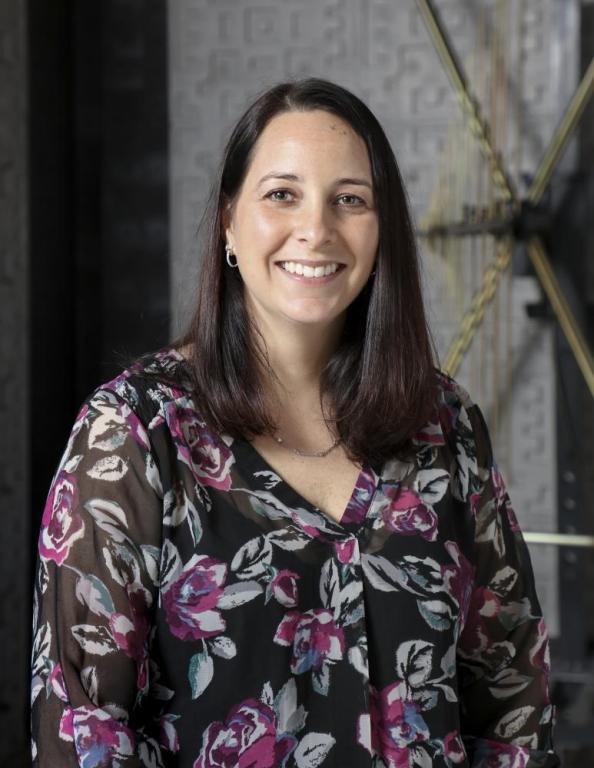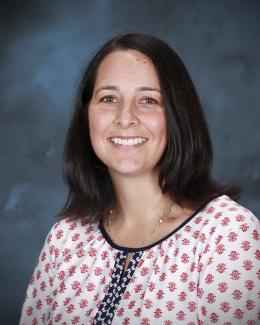
Christina Forrester’s meticulous nature is a plus for her work leading technical testing and analysis of radiological and nuclear detection devices, whether that work takes her to the Desert Southwest or to her own lab outfitted with specialized equipment at Oak Ridge.
Forrester directs Oak Ridge National Laboratory’s Technical Testing and Analysis Center (TTAC), providing evaluation services for various government agencies and private industry, as well as ORNL researchers. The center has its genesis in the former instrumentation and controls division at ORNL and was originally known as the Environmental Effects Laboratory.
Forrester recently spent seven months at the White Sands Test Facility in New Mexico, using their large-scale equipment to evaluate 20-foot-tall radiation portal monitors in a project for the Department of Homeland Security’s Domestic Nuclear Detection Office. Testing included mimicking real-world conditions such as variable temperatures, humidity, solar heating and radiation, as well as electromagnetic and mechanical testing.
Forrester and her team in the Electrical and Electronics Systems Research Division ensure that devices are fully operational and conform to established standards, with the ability to perform climatic, electromagnetic, mechanical, and functional testing of devices using industrial radionuclides, medical isotopes, or special nuclear material. Those devices can range from large detectors such as the portal monitors that vehicles can pass through, to handheld devices. While she was in White Sands doing testing on the portal monitors, for instance, other TTAC staff were evaluating smaller scale radioisotope identifier devices back at ORNL.
“My motivation comes from being able to help people produce the best science they can,” Forrester said. “I like hearing about the successes our researchers have had, and how we can help them get to the next level with our evaluations. Testing is usually the last thing anyone wants to do, but you get so much valuable information that can go on to improve your process or equipment.”
Forrester first became interested in science and engineering when she realized fixing faulty electronics like her parents’ VCR could lead to a real career. She grew up in Florida and played volleyball at a community college in Tampa before moving on to earn her undergraduate degree in electrical engineering at the University of Florida. She later moved to Tennessee and was hired to work in the Analog and Digital Systems group at ORNL. She earned her master’s in electrical engineering at the University of Tennessee, Knoxville.
Forrester developed a knack for testing and analysis at ORNL while working on projects such as hybrid solar lighting and software for the Machine Instrument Package used to monitor the operations of the United States’ centrifuge machine. She went on to work for TTAC and later became its director after the previous director went to work for the Domestic Nuclear Detection Office at DHS. During her time at the lab, Forrester and her colleagues have helped establish and refine standards for the devices used to monitor our borders and entry points for weapons of mass destruction.
Away from the lab, Forrester still plays volleyball on an adult co-ed team for the winter recreational league in Oak Ridge and is an outfielder on two softball teams in the fall and spring. She and her husband, a minister at a Knoxville church, are building a new home and stay busy parenting their young child.
Up next for Forrester at ORNL is increasing TTAC’s capabilities to do dual testing—for instance, testing a device for resistance to vibrations while it’s inside a temperature chamber.
She also expects the type of testing TTAC conducts to diversify. Because of the nature of TTAC’s equipment—everything from environmental and moisture chambers to a salt fog chamber for marine environment testing—Forrester said the lab can be used by researchers for anything from hardware solutions for a modernized grid, to advanced materials for harsh environments, or for energy efficient building envelopes.
TTAC is the only accredited lab of its kind in the country, undergoing assessment and recertification each year by the National Voluntary Laboratory Accreditation Program to the radiation detection standards for Homeland Security published by the National Institute of Standards and Technology/Institute of Electrical and Electronics Engineers—ANSI/IEEE N42 (NVLAP Lab Code: 200861-0).
ORNL is an exciting place to work, Forrester noted, because of the diversity of science at the lab. “Sometimes we host researchers that might not have met each other except for being here. Bringing that knowledge together can result in improvements to experiments or to instruments,” she said.
ORNL is managed by UT-Battelle for the Department of Energy's Office of Science, the single largest supporter of basic research in the physical sciences in the United States. DOE’s Office of Science is working to address some of the most pressing challenges of our time. For more information, please visit http://energy.gov/science. —by Stephanie Seay


